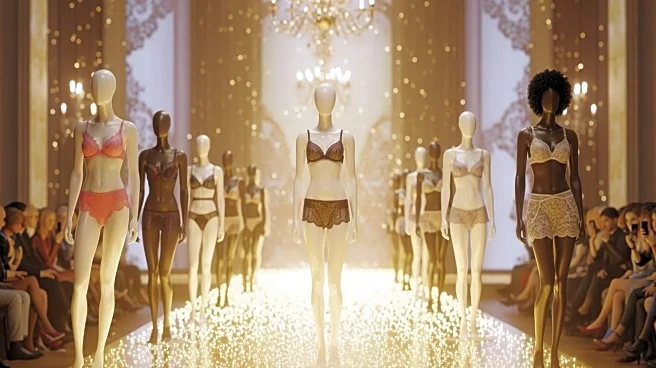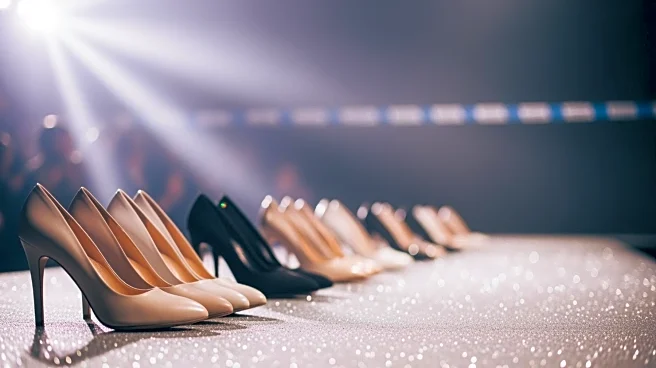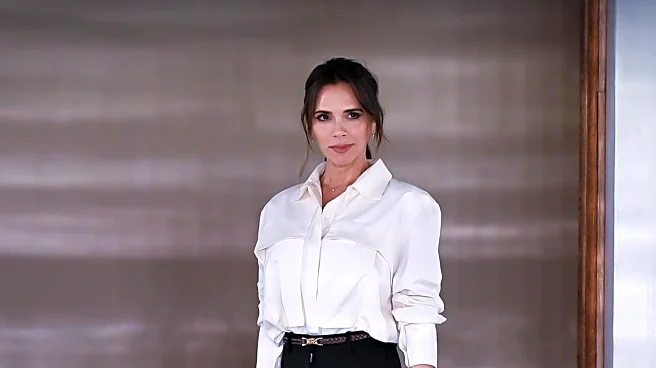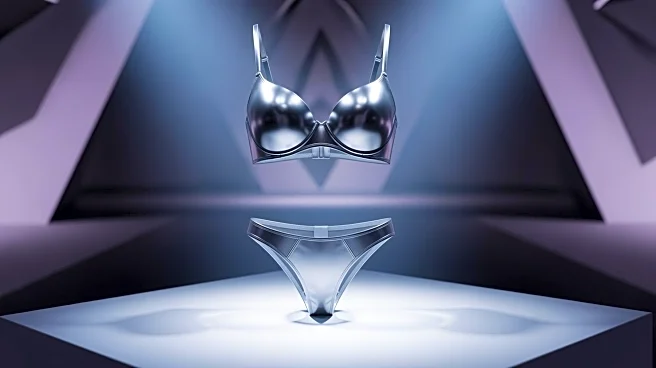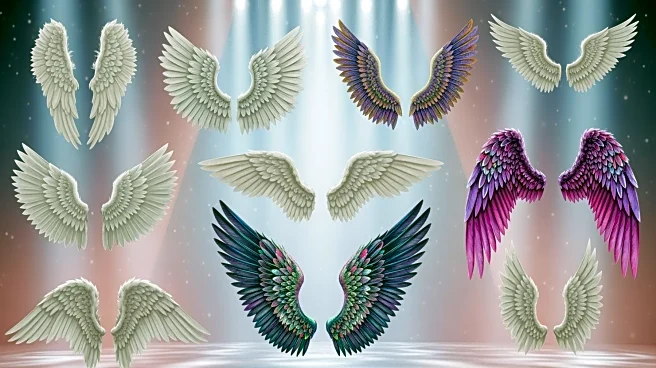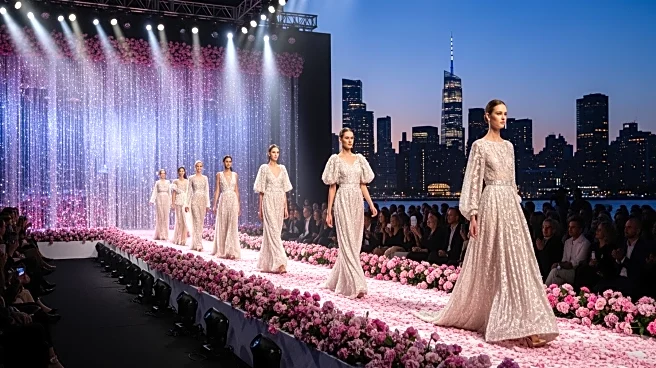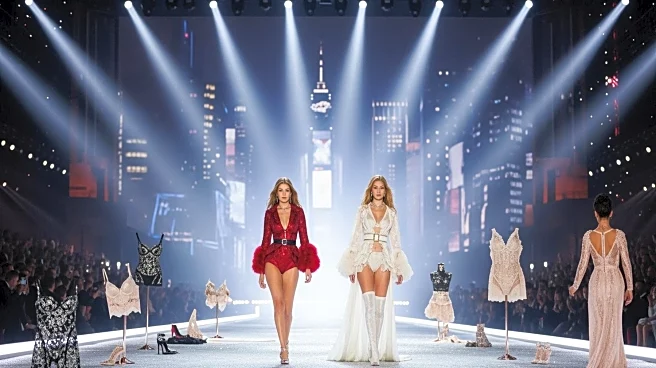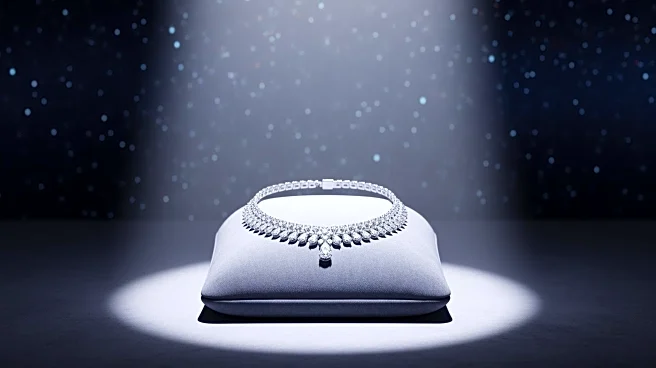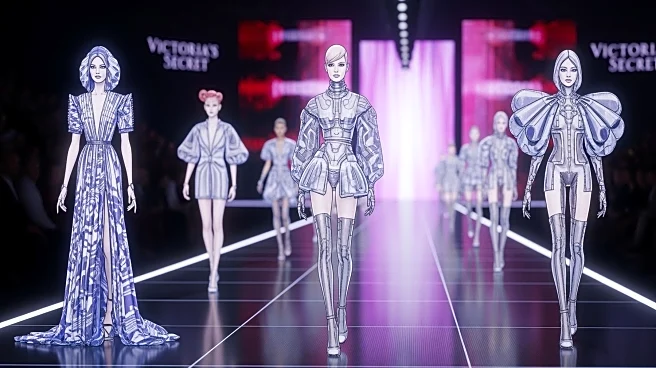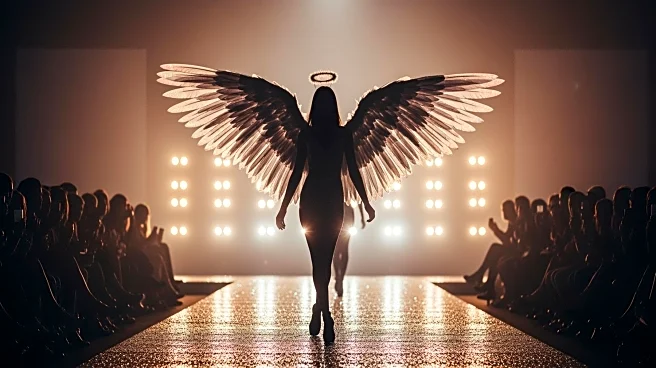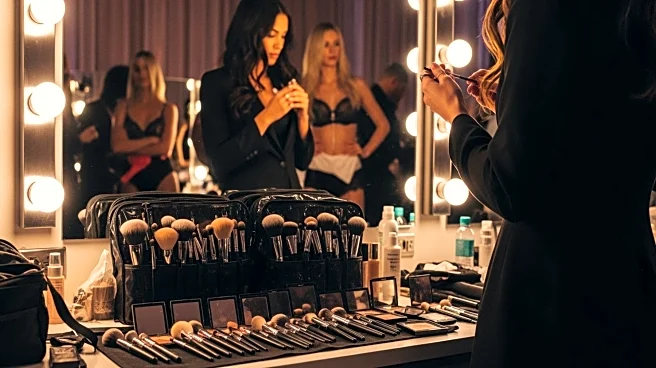What's Happening?
Victoria's Secret held its 2025 runway show in New York City, marking a significant return to its traditional glamour after a period of hiatus and rebranding efforts. The event featured a star-studded
lineup of supermodels, including Adriana Lima, Alessandra Ambrosio, and the Hadid sisters, alongside newcomers like Israeli model Daniella Halfon. The show also included performances by artists such as Missy Elliott and K-pop group TWICE. The runway was characterized by bold, bedroom-inspired looks, ranging from Moulin Rouge-style glam to sporty ensembles. Notably, the show opened with model Jasmine Tookes, who showcased a gold mesh dress and shell-like wings while visibly pregnant.
Why It's Important?
The revival of the Victoria's Secret fashion show signifies a return to the brand's roots, focusing on glamour and spectacle. This move comes after years of criticism regarding the brand's portrayal of beauty standards and its attempts to shift towards more politically correct messaging. The inclusion of diverse body types and skin tones in the show reflects a broader industry trend towards inclusivity, although the core aesthetic remains largely unchanged. This event could influence other fashion brands to balance traditional glamour with modern inclusivity, impacting fashion industry standards and consumer expectations.
What's Next?
Victoria's Secret's return to its original format may prompt reactions from both supporters and critics. The brand might continue to navigate the balance between maintaining its iconic image and addressing modern calls for diversity and inclusivity. Future shows could further explore this balance, potentially influencing the broader fashion industry's approach to representation and marketing strategies.
Beyond the Headlines
The show's return highlights ongoing cultural debates about beauty standards and the fashion industry's role in shaping societal perceptions. While Victoria's Secret has made strides towards inclusivity, the core appeal of its shows remains rooted in traditional notions of glamour. This duality may continue to spark discussions about the ethical responsibilities of fashion brands in promoting diverse and realistic beauty ideals.
